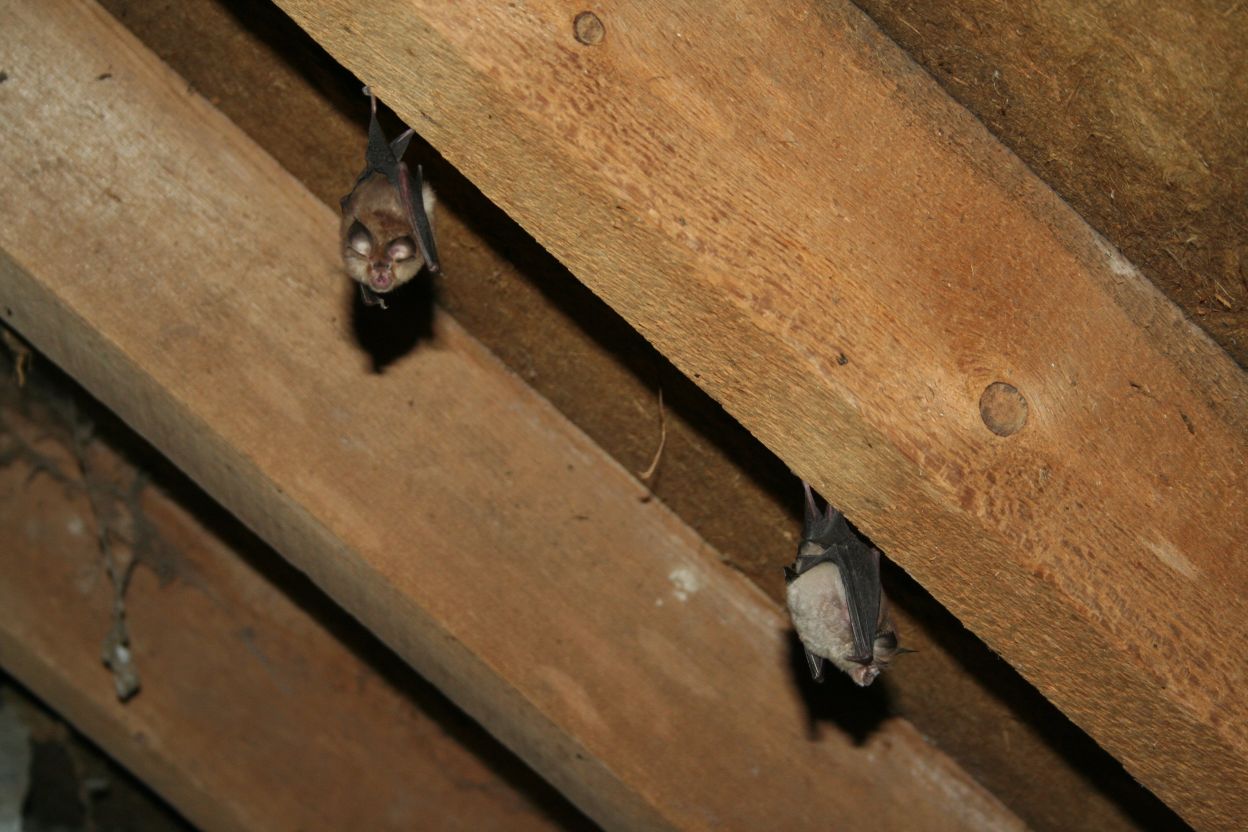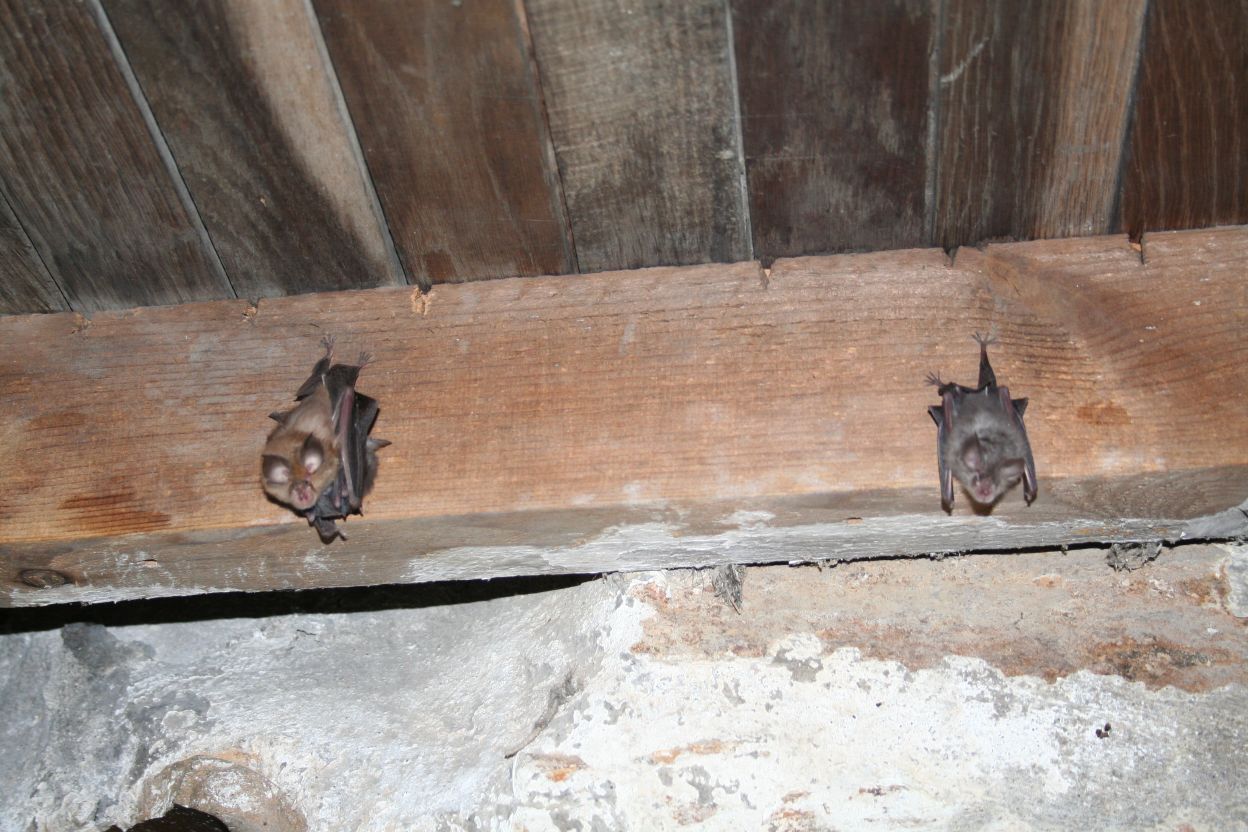Lesser horseshoe bat
Identification
This project focuses on the lesser horseshoe bat (Rhinolophus hipposideros) one of the smallest UK bats. They weigh around 4-9 grams (the size of a plum) with a wingspan of 225-250mm. Lesser horseshoe bats are one of only two species of Rhinolophus (horseshoe) bat in the UK, which are characterised by the horseshoe shaped nose leaf around the nostrils. They hang freely from their feet often with thier wings wrapped around their body.

 Lesser horseshoe bats echolocate through their nostrils and the disc like shape of the noseleaf is thought to increase the directionality of echolocation calls. With very short wings lesser horseshoe bats are highly maneuverable in flight prefering to fly close to vegetation (Dietz et al. 2006).
Lesser horseshoe bats echolocate through their nostrils and the disc like shape of the noseleaf is thought to increase the directionality of echolocation calls. With very short wings lesser horseshoe bats are highly maneuverable in flight prefering to fly close to vegetation (Dietz et al. 2006).